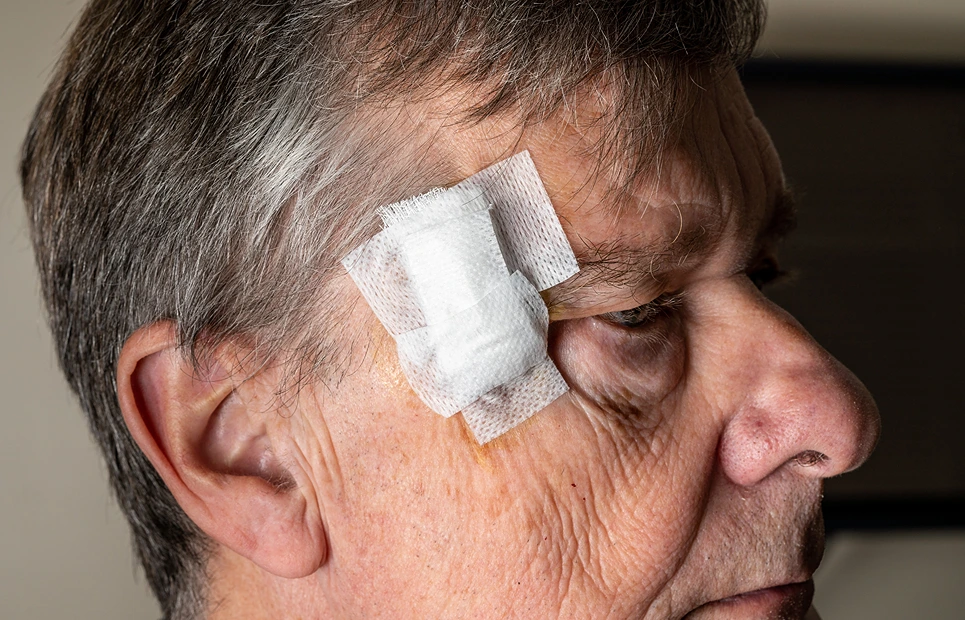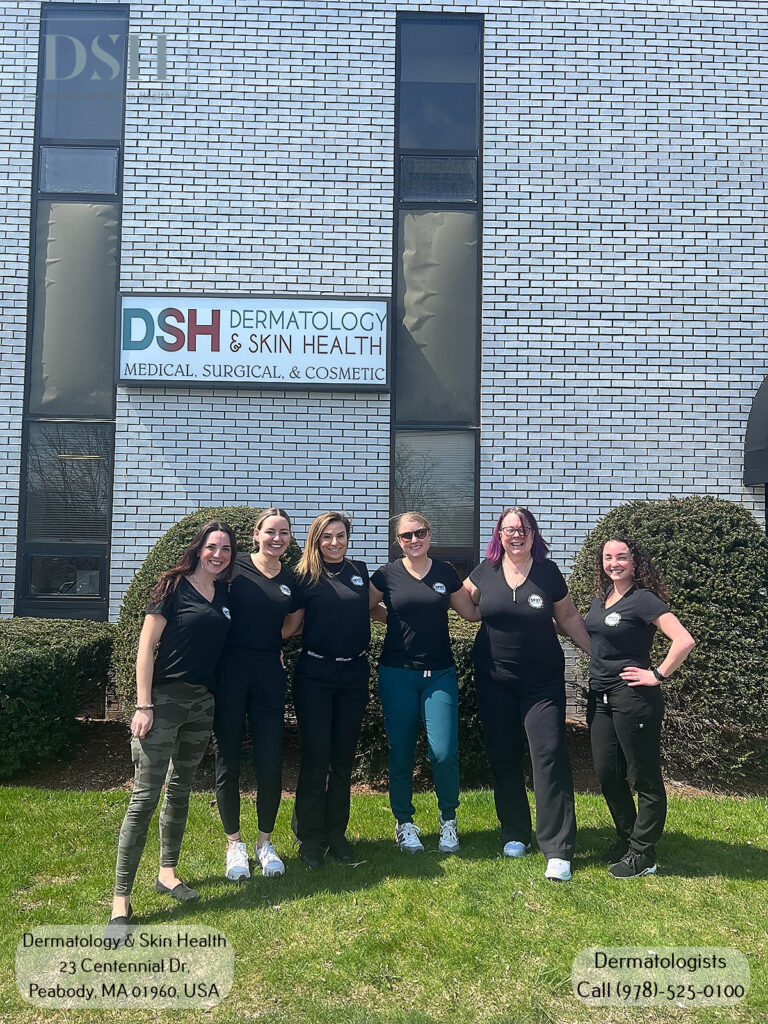

Facing a skin cancer diagnosis can be daunting, especially when it involves a sensitive area like your temple. But what if there was a highly effective treatment that could not only remove cancer but also minimize scarring and preserve your appearance?
Enter Mohs surgery - a game-changer in the world of skin cancer treatment.
In this comprehensive guide, we'll demystify Mohs surgery on the temple, taking you through its intricacies, benefits, and potential risks. We'll also provide you with invaluable insights into the associated costs and arm you with practical tips to speed up the healing process and optimize post-surgery care.
So, whether you're considering Mohs surgery or simply seeking to understand more about your options, read on. This guide is your first step towards informed decision-making and, ultimately, healthier skin.
Mohs micrographic surgery, commonly known as Mohs surgery, is a specialized and highly effective method for treating various types of skin cancer, including squamous cell carcinoma and basal cell carcinoma, and on various parts of the body.
Developed by Frederic Mohs in 1930, this procedure involves the careful removal of thin layers of cancerous tissue, allowing the surgeon to preserve as much healthy skin as possible while ensuring complete tumor removal.
Mohs surgery on the temple is a preferred treatment option for several reasons:
One of the key advantages of Mohs surgery is its precision. The procedure involves the removal of skin cancer layer by layer. Each layer is examined under a microscope to check for cancer cells. This meticulous process continues until no more cancer cells are detected. This ensures that all cancerous cells are successfully eliminated, providing a high cure rate.
This level of precision is particularly important when dealing with skin cancer in the temple, a region where preserving healthy tissue is crucial due to its proximity to the eye and other vital structures.
Mohs surgery is designed to remove only the diseased tissue while leaving as much healthy tissue intact as possible. This is especially beneficial when treating skin cancer on the temple, as this area is often visible and plays a significant role in facial aesthetics.
By preserving healthy tissue, Mohs surgery minimizes the impact on the patient's appearance and reduces the need for extensive reconstructive surgery.
Traditional skin cancer surgeries often require the removal of a significant amount of healthy tissue around the tumor to ensure all cancer cells are removed. This can lead to noticeable scarring.
However, because Mohs surgery targets only cancerous tissue and spares healthy skin, it results in minimal scarring. This is a significant advantage, especially in visible areas like the temple.
The precise nature of Mohs surgery often results in smaller wounds compared to other skin cancer treatments. Smaller wounds generally heal faster and with fewer complications.
Additionally, because the surgery is usually performed using local anesthesia, patients can often return to their normal activities sooner. This can greatly shorten the time it takes to recover and help patients get back to their normal lives sooner.

The process of Mohs surgery on the temple involves several steps:
| StepDescription1Initial Examination and DiagnosisA thorough examination of your temple by a dermatologist or a Mohs surgeon will be initiated. They will assess the size, location, and type of skin cancer. To confirm the diagnosis of skin cancer, a physical examination, and a biopsy may also be conducted. During the biopsy, a small sample of skin is taken and examined under a microscope. | ||
| 2 | Pre-Surgery Preparations | Once the diagnosis is confirmed, a general health checkup is conducted to ensure you are fit for surgery. Doctors may perform blood work and imaging tests such as MRI or CT scan to get a detailed view of the skin cancer and check if it has metastasized. This step helps the doctor plan the surgery and anticipate any potential complications. |
| 3 | Surgical Preparations | On the day of the surgery, you'll receive a local anesthetic to numb the area and reduce pain. The doctor will then mark off the affected skin area on your temple to guide the surgery. You will be conscious throughout the procedure, but you won't feel any pain. |
| 4 | Skin Removal | The surgeon then begins the process of removing the skin cancer. This is done in stages, with the surgeon removing one small layer of tissue at a time. This step is repeated until no more cancer can be found in the samples. This method ensures that the least amount of healthy tissue is removed. |
| 5 | Processing Tissue Samples | Each layer that is removed is immediately examined under a microscope for signs of cancer. This allows the surgeon to be sure that all the cancer has been removed. If cancer cells are detected, the surgeon knows exactly where to remove more tissue. |
| 6 | Replacement Skin Grafting | Once all visible signs of cancer have been removed, the surgeon will assess the wound. If the wound is large or in a cosmetically sensitive area, a skin graft or flap may be used to cover the treated areas. This involves taking skin from another part of the body and transplanting it to the wound site. Smaller wounds can be left to heal on their own. |
After undergoing Mohs surgery on your temple, it's crucial to follow your doctor's instructions for post-operative care to ensure proper healing and minimize complications. Here are a few things to keep in mind:
After your operation, you may experience some temporary discomfort, swelling, slight bleeding, and redness at the site. These side effects are common and typically resolve on their own.
In rare cases, scarring may result from Mohs surgery on the temple. However, proper wound care and following your surgeon’s guidelines for recovery can minimize these risks.
The cost of Mohs surgery on the temple can vary depending on several factors, including the size of the skin cancer, the type of tissues being removed, and whether reconstructive or cosmetic surgery is necessary afterward.
Before receiving any medical services, it is crucial to contact your healthcare provider and inquire about the estimated out-of-pocket expenses you might incur.

At Dermatology & Skin Health Clinic, we use cutting-edge tools and techniques to diagnose and treat our patients. Our goal is to provide the best possible treatment for your differing needs. Our specially trained staff guarantees that each and every one of our clients will receive compassionate care during their visit.
With Mohs surgery on the temple, you can create long-term positive change in your quality of life – contact us today and let us help you experience true relief and confidence.
If your desired appointment type or preferred provider is unavailable online, kindly call (978) 525-0100 for Peabody, MA and (603) 742-5556 for all New Hampshire locations. Alternatively please feel free to send us your request via the patient portal, or via email at info@dermskinhealth.com
*For medical dermatology appointments in MA please dial (978) 525-0100 or fill out the appointment request form above.